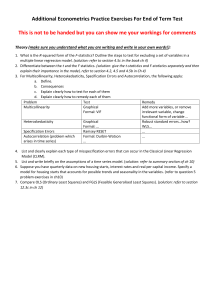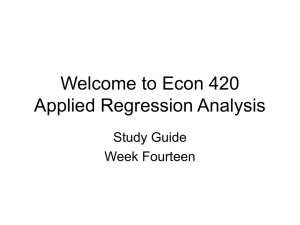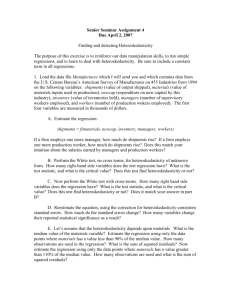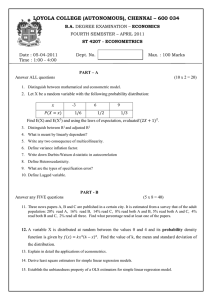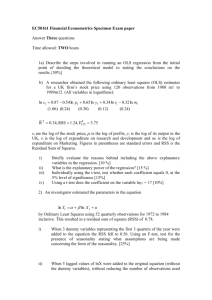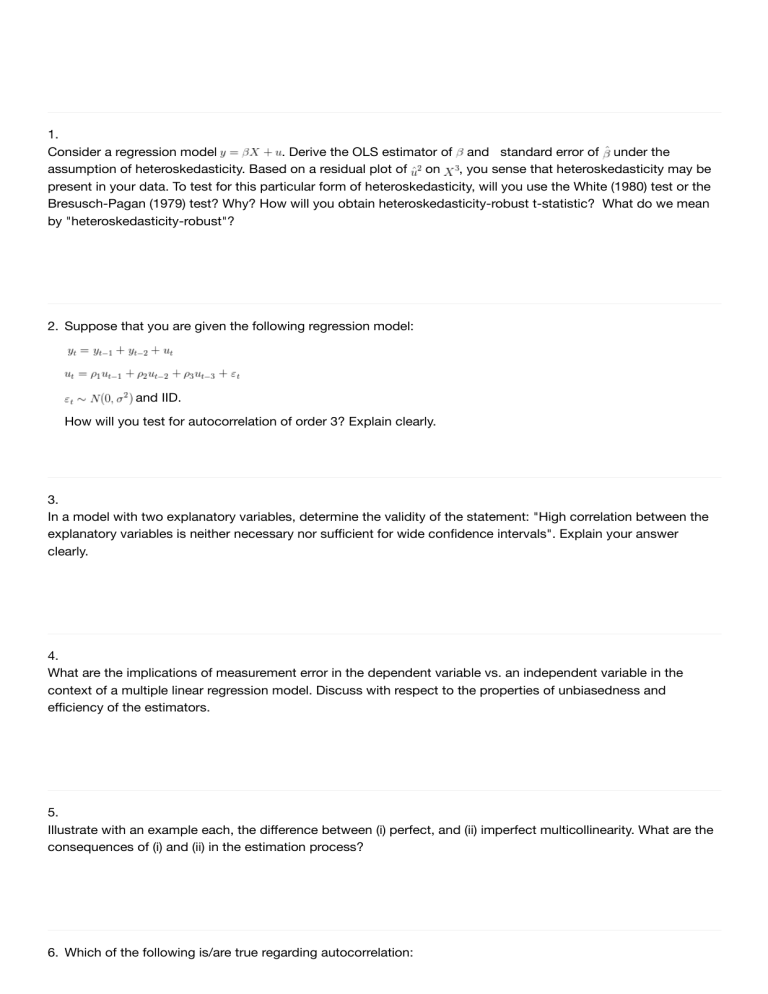
1. Consider a regression model . Derive the OLS estimator of and standard error of under the assumption of heteroskedasticity. Based on a residual plot of on , you sense that heteroskedasticity may be present in your data. To test for this particular form of heteroskedasticity, will you use the White (1980) test or the Bresusch-Pagan (1979) test? Why? How will you obtain heteroskedasticity-robust t-statistic? What do we mean by "heteroskedasticity-robust"? 2. Suppose that you are given the following regression model: and IID. How will you test for autocorrelation of order 3? Explain clearly. 3. In a model with two explanatory variables, determine the validity of the statement: "High correlation between the explanatory variables is neither necessary nor sufficient for wide confidence intervals". Explain your answer clearly. 4. What are the implications of measurement error in the dependent variable vs. an independent variable in the context of a multiple linear regression model. Discuss with respect to the properties of unbiasedness and efficiency of the estimators. 5. Illustrate with an example each, the difference between (i) perfect, and (ii) imperfect multicollinearity. What are the consequences of (i) and (ii) in the estimation process? 6. Which of the following is/are true regarding autocorrelation: Options: 0) The Durbin-Watson statistic can be used to test for autocorrelation of order 1 or higher 1) The result of the Durbin-Watson test is always determinate 2) The Durbin-Watson statistic is valid for both small and large samples 3) None of the above 7. Consider the regression model: where, but all other Gauss-Markov assumptions hold. Which of the following statements is/are true? Options: 0) All the parameters in the model can be estimated 1) Only 2) 3) will be biased; will be unbiased will be biased can be estimated, but cannot be estimated 8. If both heteroskedasticity and AR(1) is present in a regression model, it will lead to: Options: 0) biased estimates and can be addressed using the instrumental variables method 1) biased and inefficient estimates that can be corrected using heteroskedasticity and autocorrelation consistent standard errors 2) inefficient estimates that can be corrected using heteroskedasticity and autocorrelation consistent standard errors 3) None of the above 9. Which of the following statements is/are true about proxy variables? Options: 0) They are unobserved variables 1) Their inclusion will always lead to unbiased and consistent estimates 2) They are included in a regression model when an observed explanatory variable is measured with error 3) None of the above. 10. Which of the following assumptions are not required for obtaining linear unbiased estimators with minimum variance? Options: 0) Perfect multicollinearity is not present 1) The errors are orthogonal to the explanatory variables 2) Homoskedasticity 3) The errors are independent 4) The errors have a normal distribution
